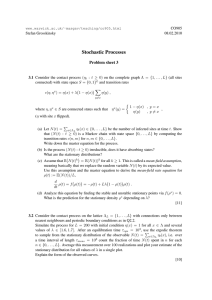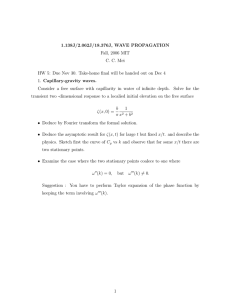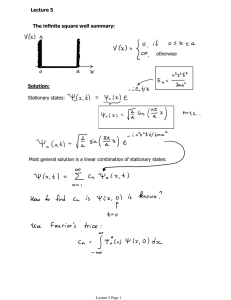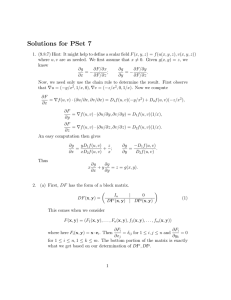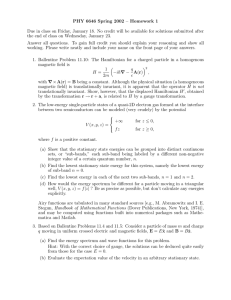Problem set n° 1
advertisement
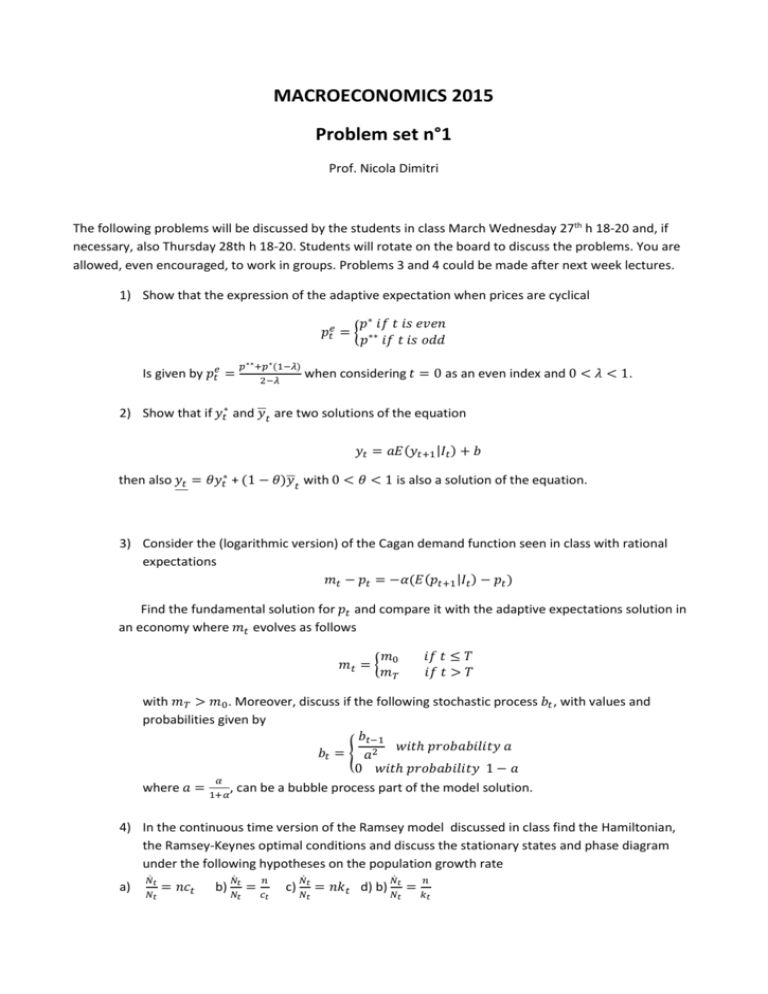
MACROECONOMICS 2015
Problem set n°1
Prof. Nicola Dimitri
The following problems will be discussed by the students in class March Wednesday 27th h 18-20 and, if
necessary, also Thursday 28th h 18-20. Students will rotate on the board to discuss the problems. You are
allowed, even encouraged, to work in groups. Problems 3 and 4 could be made after next week lectures.
1) Show that the expression of the adaptive expectation when prices are cyclical
𝑝𝑡𝑒 = {
𝑝∗∗ +𝑝∗ (1−𝜆)
2−𝜆
Is given by 𝑝𝑡𝑒 =
𝑝∗ 𝑖𝑓 𝑡 𝑖𝑠 𝑒𝑣𝑒𝑛
𝑝∗∗ 𝑖𝑓 𝑡 𝑖𝑠 𝑜𝑑𝑑
when considering 𝑡 = 0 as an even index and 0 < 𝜆 < 1.
2) Show that if 𝑦𝑡∗ and 𝑦𝑡 are two solutions of the equation
𝑦𝑡 = 𝑎𝐸(𝑦𝑡+1 |𝐼𝑡 ) + 𝑏
then also 𝑦𝑡 = 𝜃𝑦𝑡∗ + (1 − 𝜃)𝑦𝑡 with 0 < 𝜃 < 1 is also a solution of the equation.
3) Consider the (logarithmic version) of the Cagan demand function seen in class with rational
expectations
𝑚𝑡 − 𝑝𝑡 = −𝛼(𝐸(𝑝𝑡+1 |𝐼𝑡 ) − 𝑝𝑡 )
Find the fundamental solution for 𝑝𝑡 and compare it with the adaptive expectations solution in
an economy where 𝑚𝑡 evolves as follows
𝑚
𝑚𝑡 = { 0
𝑚𝑇
𝑖𝑓 𝑡 ≤ 𝑇
𝑖𝑓 𝑡 > 𝑇
with 𝑚 𝑇 > 𝑚0 . Moreover, discuss if the following stochastic process 𝑏𝑡 , with values and
probabilities given by
𝑏𝑡−1
𝑤𝑖𝑡ℎ 𝑝𝑟𝑜𝑏𝑎𝑏𝑖𝑙𝑖𝑡𝑦 𝑎
𝑏𝑡 = { 𝑎2
0 𝑤𝑖𝑡ℎ 𝑝𝑟𝑜𝑏𝑎𝑏𝑖𝑙𝑖𝑡𝑦 1 − 𝑎
𝛼
where 𝑎 = 1+𝛼, can be a bubble process part of the model solution.
4) In the continuous time version of the Ramsey model discussed in class find the Hamiltonian,
the Ramsey-Keynes optimal conditions and discuss the stationary states and phase diagram
under the following hypotheses on the population growth rate
a)
𝑁̇𝑡
𝑁𝑡
= 𝑛𝑐𝑡
𝑁̇
𝑛
b) 𝑁𝑡 = 𝑐
𝑡
𝑡
𝑁̇
𝑁̇
𝑛
c) 𝑁𝑡 = 𝑛𝑘𝑡 d) b) 𝑁𝑡 = 𝑘
𝑡
𝑡
𝑡
5) Consider the following two variables, discrete time, dynamical system
𝑥𝑡 = 2𝑥𝑡−1 + 1
𝑦𝑡 = 𝑥𝑡−1 + 2𝑦𝑡−1 + 1
Find the stationary state, the eigenvalue and eigenvectors of the transformation matrix
2 0
𝐴=[
]
1 2
and discuss the asymptotic behavior of the system. If the stationary state is not a saddle point
suggest a matrix A that could have a saddle point.




